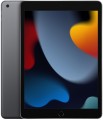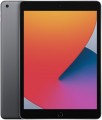CPU
The model name of the processor installed in the tablet.
The processor is the “heart” of the device. It is he who is responsible for performing all the computing operations necessary for the normal operation of the tablet, and largely determines the overall performance. Knowing the name of a specific processor model, you can easily find detailed information on it, incl. and comparison with other models.
The most popular chips these days are from
Qualcomm(in particular, the top solutions
Snapdragon 800 series and
Snapdragon 8 series),
MediaTek(budget and “mid-range”
MediaTek Helio processors and the line of advanced
MediaTek Dimensity chipsets with 5G support), and among Windows tablets
Intel processors (mainly the
Intel Core family) are often found. Quite a rarity are branded
Kirin processors from Huawei and Honor.
CPU speed
The clock speed of the processor installed in the tablet is actually the maximum number of operations performed by one processor core per second. This indicator is important for the speed of the system, but a high clock frequency in itself does not guarantee speed. The actual speed of the processor also depends on its architecture, the number of cores and many other features, and the overall speed of the device also depends on the amount of “RAM”, the installed OS, etc. Therefore, situations are not uncommon when
powerful advanced tablets have a lower CPU frequency than more modest models.
Storage capacity
The volume of the tablet's own built-in storage. The larger it is, the more information (programs, games, movies, photos, etc.) can be stored on the tablet without resorting to removable media, rewriting to other devices, etc. At the same time, the amount of built-in memory significantly affects the cost. Therefore, some models are available in several versions, differing only in the capacity of the drive. And the variety of built-in memory is quite wide: from
16 GB to
1024 GB with a 2-fold increase (
32 GB,
64 GB,
128 GB,
256 GB,
512 GB).
Note that this paragraph indicates the total amount of internal memory. The operating system and default programs also take up space in it; therefore, the volume of the drive actually available to the user will inevitably be less than the total.
Many tablets allow you to add memory cards to the built-in drive (see below). Such cards are relatively inexpensive, but they are much slower, and the ability to work with them may be limited by the manufacturer — for example, not all tablets with this function allow installing applications on removable media.
AnTuTu Benchmark
The result shown by a device when undergoing a performance test (benchmark) in the AnTuTu Benchmark.
AnTuTu Benchmark is a comprehensive test designed specifically for mobile devices, primarily smartphones and tablets. It evaluates the performance of the processor, memory, graphics, and input/output systems, providing a clear impression of the system's capabilities. The better the performance, the higher the score. According to AnTuTu, top models are those that score more than 700K points.
As with any benchmark, this test does not provide absolute precision; for more details on measurement inaccuracies, see the "3DMark Gamer's Benchmark" section.
Geekbench
The result shown by the device when passing the performance test (benchmark) Geekbench.
Geekbench is a specialized benchmark designed for CPUs. Since version 4.0, the test has also been applied to graphics accelerators; towards the end of 2019, the benchmark was released under the number "5". The characteristics of portable gadgets usually provide data specifically for the CPU. During testing, Geekbench simulates the workloads that occur when performing real-world tasks, and takes into account both the capabilities of a single core and the efficiency of multiple cores running simultaneously. Thanks to this, the final results characterize well the capabilities of the processor in everyday use. In addition, the test is cross-platform and allows you to compare the CPUs of different devices (smartphones, tablets, laptops, PCs). The help information only lists the multi-core test values for CPU.
Full HD filming (1080p)
The resolution and maximum frame rate provided by the main camera when
recording Full HD (1080p) video at normal speed, without slow motion (if available).
The standard resolution for this format is 1920x1080. Note that this can be either the maximum shooting resolution or one of the relatively simple options in addition to more advanced standards (such as UltraHD 4K). At the same time, Full HD is considered more than a decent resolution by modern standards, and at the same time, it can be supported even by fairly simple and inexpensive tablets.
As for the frame rate, there are actually two values in normal shooting - Full HD 30 fps and
Full HD 60 fps. A higher frame rate allows you to achieve very smooth display of dynamic scenes - even fast-moving objects in the frame are seen as clearly as possible, with almost no blurring. However, the low shooting speed also has its advantages - it allows you to reduce the amount of material being shot. Therefore, tablets that support 60 fps may have the ability to reduce the frame rate to 30 fps. But speeds above 60 fps are already used for shooting slow-motion video (slow-mo); see "Slow-mo" for more on this.
Slow motion (slow-mo)
The frame rate supported by the device in
slow motion (slow-mo).
In general, such shooting is called "high-speed" because it is carried out at an increased frame rate (more than 60 fps). As a result, when playing at normal speed (60 fps and below), the video looks slow (hence the name “slow-mo”). Such slowing down can be used just for fun, and as an artistic device, and even for scientific purposes - to capture movement that is too fast for human perception. Anyway, the higher the slow-mo frame rate, the more you can slow down the video and the more advanced the camera is in this regard; the minimum value nowadays is actually 120 fps, and in advanced devices this figure is 480 fps and even more. On the other hand, the higher the frame rate, the more performant the graphics part should be; and this, in turn, affects the price of the device, sometimes quite noticeably.
Also note that slow-mo shooting can only be available at certain resolutions, which are not always the maximum; these points can be directly specified in the characteristics of the tablet.
Camera (front)
Resolution
of the front camera of the tablet.
There is an opinion that more megapixels means better quality of filming. However, this is not entirely true: only the maximum resolution of the resulting images depends on the resolution of the matrix, and their quality is determined by many other parameters. However a large sensor resolution may be a sign of an advanced camera, but this is not necessary — two "eyes" with the same number of megapixels can radically differ in the quality of shooting.
The main purpose of frontcameras in tablets is video communication, and for it high resolution is not critical. Therefore, the number of megapixels in such cameras is noticeably lower than in rear cameras — for example, 2 MP considered an acceptable value, 5 MP is not bad, 7 MP and 8 MP is good, 12MP — excellent.
Battery capacity
The capacity of the battery that is normally installed in the tablet.
Theoretically, a larger battery means longer battery life. However, in fact, the battery life of the tablet also depends on its power consumption — and it is influenced by the characteristics of the processor and screen, the installed OS, and other factors. Therefore, only models with similar characteristics can be compared in terms of battery capacity (and even such a comparison will be quite approximate); and to assess battery life, it is best to look at the directly claimed operating time in different modes.

